The Feud: The Hatfields and McCoys: The True Story Read online
Page 11
The brothers, knowing that they were about to die, broke down, tears staining their grimy faces. For Tolbert, the grief was short-lived, however. To him, there were things worse than death, like showing weakness in front of a Hatfield. Regaining his composure, he growled defiantly: “I want the man that kills me to stand right before my eyes. I want to look him right in the eye.”14
It would be a moonless night. Anse—standing with his brothers Wall and Elias, as well as his sons Johnse, Cap, and Bob, the last just fifteen—organized his men. The family included Andy and Lark Varney, sons of Devil Anse’s sister Matilda, and eighteen-year-old Tom “Guerilla” Mitchell, who was married to their sister Nancy, and was rounded out by Bill Tom Hatfield, a cousin of Devil Anse; the slow Cotton Top Mounts; and Joe Murphy, whose daughter would later marry Wall’s youngest son. Charlie Carpenter served as the sergeant at arms. The three Mahons, the three crossover McCoys, the two Whitts, Dan and Jeff, and Alex Messer mustered with others in lines in front of the schoolhouse.
Devil Anse saddled up. Elias would stay behind. And although by now he had misgivings about the proceedings, Wall stood aside as Devil Anse ordered Carpenter to bring out the prisoners. In eerie silence the throng ushered the McCoys toward the river on foot. Pharmer and Bud openly wept.
When they reached the Tug, a voice spoke up. It was Wall. He had decided that he would go no farther. It was he who had assured Old Randall on Tuesday morning that his sons would be tried in the district where the fight had taken place; relying on his word, Randall had gone to get legal help in Pikeville. While Wall had his character flaws—he was reported to be a serial philanderer, for one thing—he was both a justice of the peace and a church deacon, roles he took seriously. He had decided to go against his brother and make a stand. “The Bible condemns murder,” he asserted, arguing that they should turn the brothers in to the authorities and let them be tried in court.15
But Devil Anse would not hear it. He directed the men to keep going. They marched into the river. Overcome by fear and exhaustion, Pharmer lost consciousness. Two men took him under the shoulders and dragged him through the current. Bud sobbed. Tolbert trudged stoically, according to Spears, “erect and in silence, man fashion.” When they got to the Kentucky shore, the Hatfield squad kicked water into Pharmer’s face to revive him. The path picked up again on the far side of the Tug, but the party turned off it. They marched the condemned along the weed-choked riverbank.
Exasperated, Wall headed home, he later testified, by himself. Shortly after he reached the main road, he encountered his brother Elias on his way to Joe Davis’s to buy whiskey. Elias invited him to come along and sent a man across the river to buy a jug. When the man came back, Davis was with him. Wall asked Davis if he had seen the boy, meaning Bud McCoy, stab Big Ellison. Davis said, “All I know is I seen him with a knife in his hand and there were blood on it.”
Wall responded, “That’s all I want to know.”16
It was a chilly summer night. Stars buckshot the black sky. Several hundred feet upstream from where they had forded the river and about a quarter mile below the mouth of Sulphur Creek, the execution squad reached a depression in the bank, a sink opening onto the river, where rubbish was dumped, including, recently, the carcasses of sheep-killing dogs. They would go no farther.
At a copse of pawpaws, the men hung a lantern to cast some light and to check for snakes, which were said to prefer blackberry bushes and pawpaw trees. They shoved the trio of McCoys to the ground among the fallen green fruit, now split open and rotting, and bound them to the saplings. “Anse said that we would rest there,” Dan Whitt later testified, “and the parties all joined—squatting around the McCoy boys and cocking their guns and pistols and saying they were going to have some fun or a shooting match.”17
At this point, Doc, Sam, and Plyant Mahon and Mose Christian, who was married to Wall’s daughter Octavia, left to return to the West Virginia side of the river. The others then forced the McCoys to rise to their knees. They deliberately placed Tolbert with his back toward them, in response to his insolent challenge to look him in the eye. Pharmer, in shock from fear, faced them like a treed raccoon in torchlight. Innocent Bud turned toward his brothers, who had gotten him into this and who could equally do him no good now.18
The firing squad—Anse, Johnse, Cap, Bob, and Bill Tom Hatfield as well as Cotton Top Mounts, Charlie Carpenter, Guerilla Mitchell, the Varneys, Joe Murphy, Alex Messer, and one or more of the Mahons, depending on whose story you believe—got into position in a line, raised their guns, and waited for a command.19
Big Jim, at age thirty-two the oldest of Randall’s sons and himself the father of four children with another on the way, had learned of Ellison’s death and now sat anxiously on the porch of his uncle Asa’s cabin on Sulphur Creek. His mother had begged him not to intercede. She could see that there was little chance of taking the boys by force, and she preferred to gamble that Devil Anse might yet do the right thing and turn her sons over to the authorities than to risk losing more lives trying to free them. The night was still, and Big Jim had heard the men pass along Sulphur Creek. He went down to the bank of the Tug and later testified that he saw Wall and Elias, Cotton Top, and Doc and Plyant Mahon there.20
Twenty minutes later, a fusillade ripped through the languid late-summer air on the Kentucky side of the Tug. Flashes of light crackled beneath the tree canopy. After the burst of fire—fifty shots or more—several more reports rang out. Then, for maybe two minutes, silence.
At his home at the head of Mate Creek, Billy Anse McCoy, who was sitting on his porch with Sam Simpkins, heard the horrible cacophony. Although Billy Anse was not involved in the feud that bore his family’s name, the volley would deeply affect his life and that of everyone in the valley.21 Big Jim McCoy heard it too. It was like being struck by lightning.
After talking to Davis, Wall would testify, he and Elias “started back down the river bank to meet a call of nature.” In the meantime, all hell broke loose on the opposite shore.22 Wall would later take a daring stand based on his claim of innocence: He would turn himself over to the Kentucky authorities. It would cost him dearly.
The two older brothers—Tolbert, who had started the fight, and Pharmer, who had ended it by shooting Ellison—were riddled with shot. The fatal bullet pierced Tolbert’s skull with such velocity that it passed straight through and kept going. Another shot also hit his head, and lead filled his torso. Pharmer was shot once in the head and multiple times in the body. But nobody had aimed at Bud, who now trembled uncontrollably as he looked down on his brothers, who were slumped in place, as if they had just dozed off. Johnse, Cap, Guerilla, and Cotton Top fired a few more shots into the two corpses out of spite. Then they turned and with the others started down the river.23
But Alex Messer decided to go back, saying, “Dead men tell no tales.”24 Devil Anse looked at Messer, a six-footer with dark hair and blue eyes later described as “sharp, penetrating, shifty… as if he was constantly gazing down a gun barrel,” and agreed. “Go you,” he said, nodding in the direction they had come from, and rode on.
From a broken family from Hazard, Kentucky, Messer was a Union infantryman who had served in the Fourth Regiment of the Kentucky Mounted Infantry Volunteers, which had seen action throughout the Southeast. His brother Elijah fought on the other side, serving as a sergeant in the Confederate Thirteenth Kentucky Cavalry, Tenth CSA. Alex seemed to like army life, volunteering early for three years and then re-upping for another three. However, he had become entangled with a drowning mule while crossing a river outside Macon, Georgia, and his resulting injuries cut short his service.
Messer loaded his shotgun with buckshot and returned to where the kneeling boy, still bound, awaited his fate. Now forty-four, Messer was something of a rolling stone. He had done at least one stint in the Louisville jail around 1870 and was currently on his fourth wife, who was twenty years his junior and pregnant with their first child. Messer walked up to Bud on the embankment, p
laced the barrels of his gun against his head, and squeezed both triggers.25
Jim McCoy’s heart broke as his little brother’s animal cry of anguish reached him from across the river. An instant later, the boom of the double-barreled shotgun thundered off the mountain walls.
THEIR WORK DONE, the reports of so many nearly simultaneous gunshots still ringing in their ears, and oblivious to the fact that this act of taking justice into their own hands would haunt them the rest of their lives, the execution squad recrossed the Tug into West Virginia. Perhaps pressured to do it by Devil Anse, Wall was waiting for them—although he would later deny it—so that he could administer an oath of secrecy. Devil Anse had his men form a row facing the justice of the peace. “Hold up your right hands,” Wall commanded, as if he were in his courtroom. “You and each of you do solemnly swear never to reveal to anyone what has been done this night under the penalty of death, so help you God.” It was not a question. “I do” was the only possible response.26
Shang Ferrell was with Elias at his house, as Ferrell later testified, when Devil Anse, Wall, Johnse, and others showed up that night around ten. Elias asked Wall what they had done with the boys. “We have sent them back to Kentucky to stand the civil law,” Wall replied, in a twisted echo of Ellison’s deathbed suggestion.27
BIG JIM AND SEVERAL OF Asa’s neighbors crossed the Tug to inspect the site of the commotion. At around the same time, Randall and Roseanna McCoy arrived home from Pikeville and were met by Sally, who told them that Ellison had died but that the boys had been alive when she had seen them earlier that day.28
Carrying lanterns and guns, Big Jim and Anse Ferrell approached the refuse pit praying for a miracle but expecting the worst. The worst is what they found. Big Jim later described the horrific scene stoically: “My brothers was dead when I found them.” Lifting their lamps, they made out the bloody, broken bodies tethered to the shrubs like animals. Pharmer was shot sixteen times. Tolbert had taken at least six shots. Bud remained in a kneeling position hanging on to the bushes with the top of his head missing.29 The two men did not disturb the scene of the crime.
The next morning, Thursday, justice of the peace Joe Hatfield, acting as the district coroner, led a contingent of men, including a grand jury, to inspect the crime scene. They found Bud still up on his knees. According to Squirrel Huntin’ Sam, one of the party picked up the top of his skull, which had flown six feet from his body, “scooped up his brains and returned them to his head.”30 Joe cut the ropes tying the bodies to the pawpaws as the twelve-man grand jury inspected the scene.
The officers who had originally arrested the three McCoys testified to the grand jury that at Preacher Anse’s house, the prisoners were taken from them and bound and that Devil Anse, Wall, and Cap Hatfield had told them to “vamoose.”31 In just half an hour, Joe Hatfield and his jury produced a verdict: The three McCoys had “come to their death by shot wounds at the hands of persons to the jury unknown.” The names of the alleged perpetrators—if not justice—would be produced in due time. With a jackknife, someone inscribed in the shiny bark of an old beech tree that shaded the murder grounds The McCoy Boys, Shot in 1882, and then scratched a crude border around his work.32
News of the murder spread rapidly. When he heard that the corpses were lying down by the riverbank, John Wallace Hatfield, a strapping, square-headed twenty-year-old, readied a sled with two yokes of oxen and with his brother-in-law and his father—known as Uncle Wall, to distinguish him from the other Wall Hatfield—drove to the pawpaw patch. They loaded the bodies onto the sled and then drove them to the McCoy home on Blackberry Fork. It was eleven o’clock at night before they finished their gruesome task. Between the weight of the bodies and the rocky five-mile journey, their sled was destroyed. But these Hatfields, friends of Randall and Sally, could rest easy, having delivered the McCoy brothers to their final resting place.33
Chapter 9
Life After Death
1882–1884
The three McCoy brothers, who in the midsummer heat had been laid out outside on the porch at Randall and Sally’s, were photographed for posterity. In the picture, the brothers look placid, their faces shaved except for trim mustaches, their clothes clean, their arms crossed on their chests with their wrists bound to keep them in place. Three men, presumably their brothers, squat behind them, lifting their heads up to the camera. Tolbert’s and Bud’s skulls are held together by fresh white bandages.
Word spread from house to house, and more than a thousand mourners made their way to the head of Blackberry Fork for the funeral, which was held on Friday, August 11, the day after their bodies arrived home. A broad common grave on a hillside shelf beside the house awaited the trio. Many in the community said that the three had brought about their own downfall and would now have eternity to share one another’s company, but the grief was real as friends placed each coffin on a litter and soberly carried the brothers one at a time across the stream and uphill to the grave. Here, as the Baptist preacher was about to begin his prayer, Sally fell on her knees and wailed, calling on God to witness that if her pleading on the morning of Election Day had been heeded, neither Ellison nor her boys would have suffered such tragic ends.1
Tolbert, Pharmer, and Bud McCoy laid out for burial at their parents’ house. (Kentucky Historical Society, Hatfield Family Photo Collection)
Suddenly, the Tug was again a wedge between two peoples. At the best of times, men routinely carried pistols and knives, even to church. Now as they donned their Sunday best to attend Ellison Hatfield’s former church, they also grabbed their rifles. At the church, on Peter Creek, home of Devil Anse’s Civil War enemies, alertness was at its peak. While preparing the bread and wine for Communion, the deacons and elders leaned their rifles against the pulpit.2
News of the reprisal killings of the McCoy boys spread all the way to Louisville and Frankfort. However, Pike County was so remote and considered such a backwater that people who heard of the slaughter reacted with a certain detachment, shaking their heads at the barbarity of their mountain-dwelling cousins.
On September 12, a month after the McCoy boys were laid to rest in the hillside grave, if not in peace, county prosecutor S. G. Skinner filed three joint indictments, one for the murder of each brother, in open court. The indictments listed eighteen wanted men for Tolbert and Bud and twenty-one for Pharmer.3
On September 18, a Pike County jury, impaneled by circuit court judge George Brown, deliberated for several days and brought charges against twenty men. Devil Anse was the most prominent; his sons Johnse and Cap and his brothers Wall and Elias, as well as Ellison’s illegitimate son Cotton Top Mounts, were also charged. Bill Tom Hatfield, about whom little is known, rounded out the Hatfields on the list, numbering seven in all. Then there were the three Mahon brothers, Doc, Sam, and Plyant. Also among the twenty were the three crossover McCoys, Selkirk and his sons Albert and L.D.
The governor of Kentucky posted a reward of $100 for the capture of any of the five highest-profile men on the list: Devil Anse, Cap, Johnse, and Bill Tom Hatfield and Guerilla Mitchell. While the justice system moved relatively swiftly in the safety of a courtroom, in the real world it did not. When the court next convened, months later, the sheriff reported that he had been unable to arrest any of the indicted men. Beside each name in the court records, he wrote, “Not found in this county, February 18, 1883.” No one, not even the sheriff, was willing to directly confront the Hatfields.4
Several months later, a strange disease struck the deer population of Logan County, and hunters started finding deer corpses throughout the woods. It was as if a curse had hit the land, a variation of a biblical plague. Deer that were found alive were staggering around, their tongues swollen and black. In that, too, could be read implications: a loose tongue could have grave consequences. Usually a plentiful supply of meat, the deer would virtually disappear from the woods for years to come.
A YEAR AFTER HE WAS charged with the murders, on September 12, 1883, Johnse Ha
tfield, busy selling moonshine in Kentucky, was indicted for carrying a deadly weapon in Pike County. Though such a charge seemed trifling given that he was already wanted for a capital crime, a bench warrant was issued for his arrest and his bail set at $150. This was one of many concealed-weapons indictments against Johnse, and like those before it, it was probably initiated by the McCoys. Nothing would come of it.5
A month later, nineteen-year-old Cap married his first cousin Nancy Smith, who went by Nan and who was a niece of Devil Anse and also of the former home guard captain Rebel Bill Smith. Cap was not Nan’s first choice. The seventeen-year-old had turned him down when he had courted her in previous years, instead marrying Joe Glenn, a promising young timber merchant and partner in a general store.6
Perhaps Cap’s temper and reckless behavior had had something to do with her reluctance. One night, he and a dozen of his friends and their dates showed up at a church dance about half an hour after it started. A Dr. Reese and his friends had already filled the dance floor. When Cap asked Reese to let his friends dance, Reese told them all to come back the next night. Cap drew his pistol, but Reese was even quicker in drawing his. He did not hesitate to pull the trigger either, hitting Cap in one hip and, as he pivoted from the impact, in the other as well, blasting him to the floor. Cap’s friends barely prevented the angry doctor from issuing a coup de grâce to the head.
Devil Anse claimed he tended to Cap for an entire month after that episode without even removing his own clothes for a rest. His Winchesters and pistols were loaded the whole time, as he was prepared to wreak vengeance in what he felt was the necessary and honorable way should Cap die. He admitted that his son “was in the wrong,” but only the result mattered. “If he had killed my boy, I should have killed him to make it square,” he said. As it turned out, the Hatfields never even lodged a complaint against Reese. “Let him go,” Anse said once Cap recovered. “He did not kill, so I’ve got nothing to say.”7

 A Sea of Words
A Sea of Words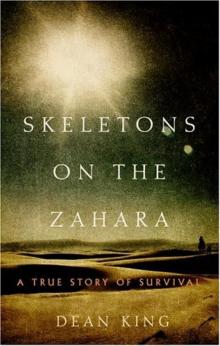 Skeletons on the Zahara
Skeletons on the Zahara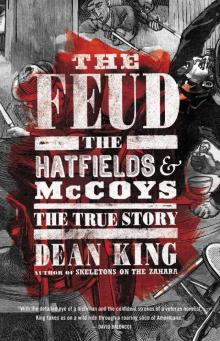 The Feud: The Hatfields and McCoys: The True Story
The Feud: The Hatfields and McCoys: The True Story Every Man Will Do His Duty
Every Man Will Do His Duty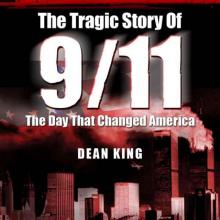 9/11...The Tragic Story of the Day that Changed America: The Terror, The Horror and The Heroes
9/11...The Tragic Story of the Day that Changed America: The Terror, The Horror and The Heroes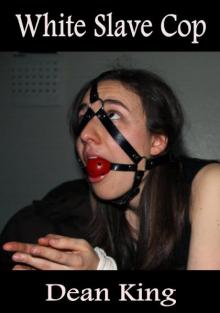 White Slave Cop
White Slave Cop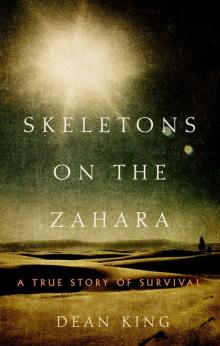 Skeletons on the Zahara: A True Story of Survival
Skeletons on the Zahara: A True Story of Survival